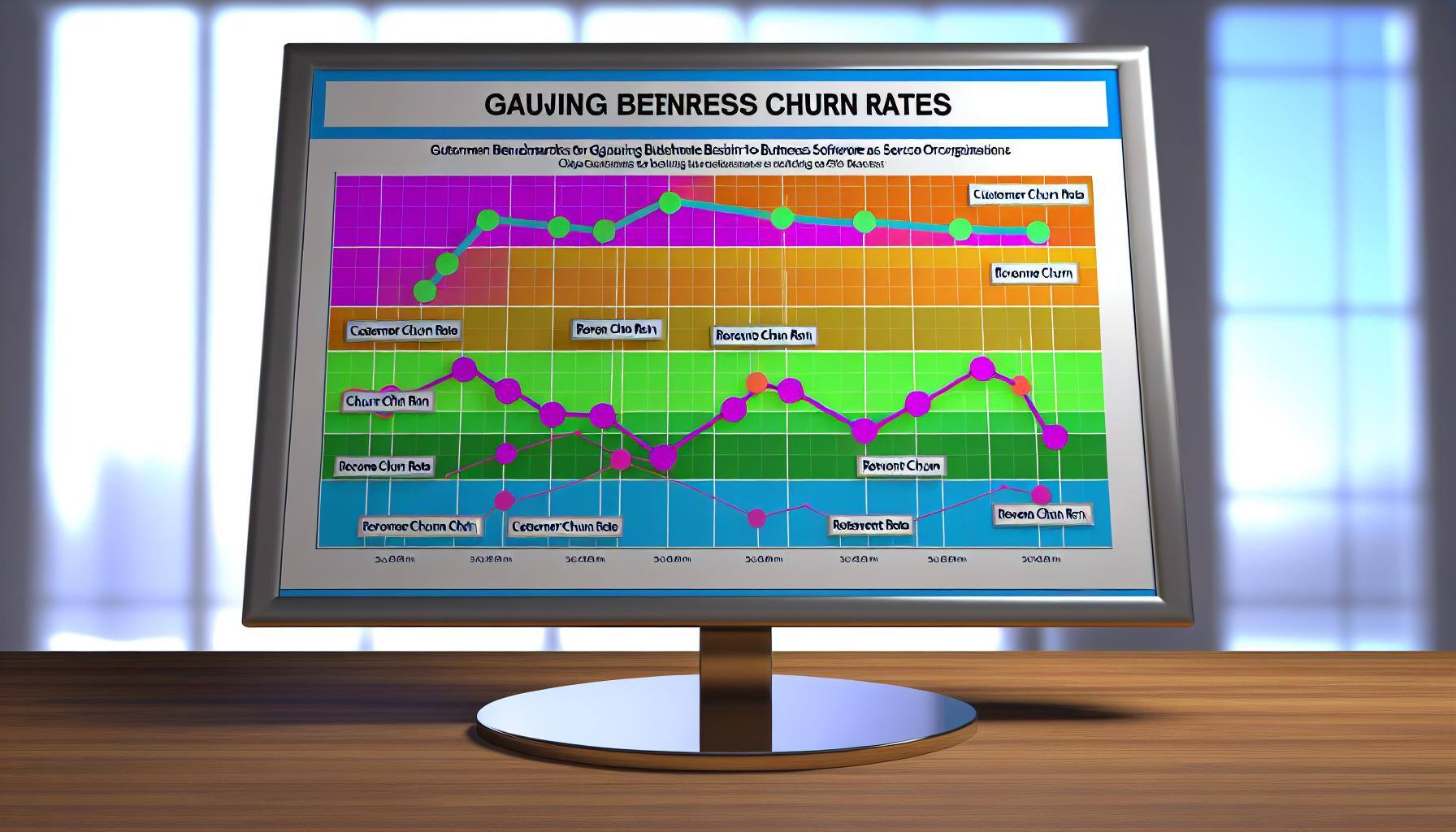Effective Ways to Reduce Customer Churn in B2B SaaS Companies
Customer churn represents a critical challenge for B2B SaaS companies. Churn occurs when customers stop using a product or service, leading to lost...
4 min read
Brian Polackoff
:
Jul 25, 2024 11:17:00 AM

In the competitive landscape of B2B SaaS, understanding and managing churn rates is crucial for sustained growth. Regularly reviewing churn rate benchmarks can provide valuable insights. Churn not only hampers revenue but also signals potential issues in customer satisfaction and product engagement. This guide aims to provide a comprehensive understanding of churn in SaaS, its impacts, and strategies to reduce it effectively.
Churn in SaaS refers to the rate at which customers stop subscribing to a service over a specified period. It is a critical SaaS metric as it directly impacts a company’s revenue and growth. The churn rate is typically expressed as a percentage of the total customer base that cancels their subscriptions within a given timeframe, such as monthly or annual churn rates.
The impact of churn on SaaS businesses extends beyond immediate revenue loss. High churn rate indicates underlying issues such as poor customer satisfaction, lack of product-market fit, or inadequate customer support. B2B SaaS companies must continuously strive to reduce churn to ensure a stable and growing revenue stream. High churn also forces companies to invest more in acquiring new customers, which is often more costly than retaining existing ones. Reducing customer churn remains a primary concern for sustainable growth.
While both B2B and B2C SaaS models experience churn, the drivers and implications can differ significantly. B2B SaaS churn often involves higher stakes due to larger contract values and longer decision-making processes. The reasons for churn in B2B scenarios can be more complex, including organizational changes or budgetary constraints, whereas B2C churn might be more influenced by individual user experiences and pricing sensitivity.
Key metrics for measuring churn include the customer churn rate, revenue churn, and retention rate. Customer churn rate focuses on the number of customers lost within a period, while revenue churn looks at lost revenue. The retention rate complements churn metrics by indicating the percentage of customers that remain subscribed over time, thereby providing a clear picture against churn rate benchmarks. These metrics provide a comprehensive view of the health of a SaaS business.
Monthly churn rate provides insights into short-term subscription behaviors, allowing SaaS companies to identify and address issues quickly. In contrast, the annual churn rate offers a broader perspective on long-term customer retention trends. While monthly measurements can highlight immediate problems, annual figures are essential for strategic planning and understanding overall customer lifecycle value.
Revenue churn and customer churn, though related, highlight different aspects of business health. Revenue churn measures the financial impact of losing customers, accounting for variations in subscription values. Customer churn, meanwhile, focuses purely on the number of lost customers and negatively impacts the company’s churn rate. In B2B SaaS, a high-value customer’s departure may significantly affect revenue churn, even if the customer churn rate remains relatively low.
Common reasons for high churn rates in B2B SaaS companies include poor product fit, insufficient customer support, and unmet expectations. Additionally, competition in the SaaS industry can lead customers to switch to alternatives that better meet their needs, potentially causing a higher churn rate. Understanding these reasons is crucial for SaaS businesses aiming to reduce churn.
Involuntary churn occurs when customers leave due to factors outside their control, such as credit card expirations or failed payments. It is distinct from voluntary churn, where customers cancel intentionally. SaaS companies must implement measures to minimize involuntary churn, such as automated payment reminders and flexible payment options.
Customer experience plays a pivotal role in influencing churn rates. A positive customer journey, from onboarding to ongoing support, encourages customer loyalty and reduces churn. SaaS businesses should invest in personalized customer experiences, pro-active support, and continuous engagement to foster strong, long-term relationships.
Effective churn reduction tactics include improving product usability, offering tailored solutions, and providing exceptional customer service. Regularly soliciting feedback and addressing customer concerns promptly can greatly reduce churn. Implementing loyalty programs and incentivizing long-term commitments are proven methods to improve retention rates and reduce customer churn.
Customer retention is fundamental for sustaining growth in SaaS businesses. Building customer loyalty through consistent value delivery and positive experiences reduces the likelihood of churn. A strong focus on customer success and continuous engagement fosters deeper relationships, reducing the propensity for customers to leave, thereby affecting the company's churn rate positively.
Customer success teams are integral to reducing churn in SaaS companies, ultimately lowering the company's churn rate. These teams focus on ensuring customers achieve their desired outcomes with the SaaS product, thereby enhancing satisfaction and loyalty, which in turn helps reduce the churn rate for SaaS. Proactive outreach, personalized support, and tailored onboarding processes are essential functions of an effective customer success team, which plays a crucial role in reducing customer churn.
Churn analysis involves utilizing various tools and methods to identify patterns and predict customer behavior. Advanced analytics platforms, customer relationship management (CRM) systems, and feedback mechanisms are invaluable for understanding churn metrics. Regular analysis helps in identifying at-risk customers and addressing their issues preemptively.
Data-driven insights are crucial for predicting and mitigating churn, which helps in understanding the churn rate for SaaS. By analyzing customer interaction data and usage patterns, SaaS companies can identify early indicators of potential churn. Implementing predictive analytics allows for timely intervention, personalized offers, and strategic communication to reduce customer churn effectively.
Examining case studies of successful churn reduction provides practical insights and applicable strategies. SaaS companies that have effectively lowered churn rates often share common practices, such as robust customer success initiatives, continuous product improvements, and strategic communication efforts. Learning from these examples can guide other businesses in formulating their churn reduction strategies, aiming to maintain a rate for SaaS that is below industry averages.
In conclusion, reducing churn in B2B SaaS is a multifaceted challenge that requires a deep understanding of customer needs, proactive engagement, and data-driven strategies. Benchmarking against industry average churn rates can be valuable. By focusing on customer retention, leveraging customer success teams, and utilizing churn analysis, SaaS companies can significantly lower churn rates and foster sustainable growth. Understanding the company's churn rate is essential for this process.

Customer churn represents a critical challenge for B2B SaaS companies. Churn occurs when customers stop using a product or service, leading to lost...

In the rapidly evolving landscape of SaaS businesses, understanding and mastering customer churn is imperative for maintaining long-term success....

In the highly competitive B2B SaaS market, churn rate is more than just a key performance indicator for your management team—it's a crucial metric...